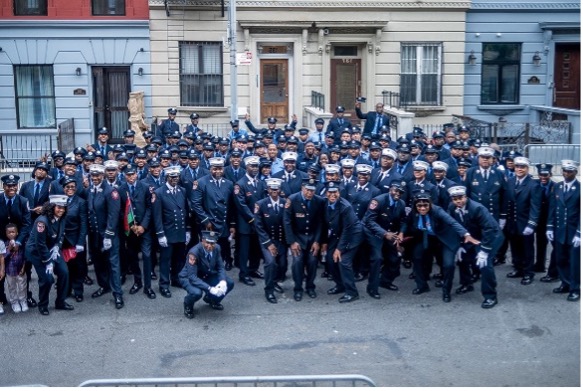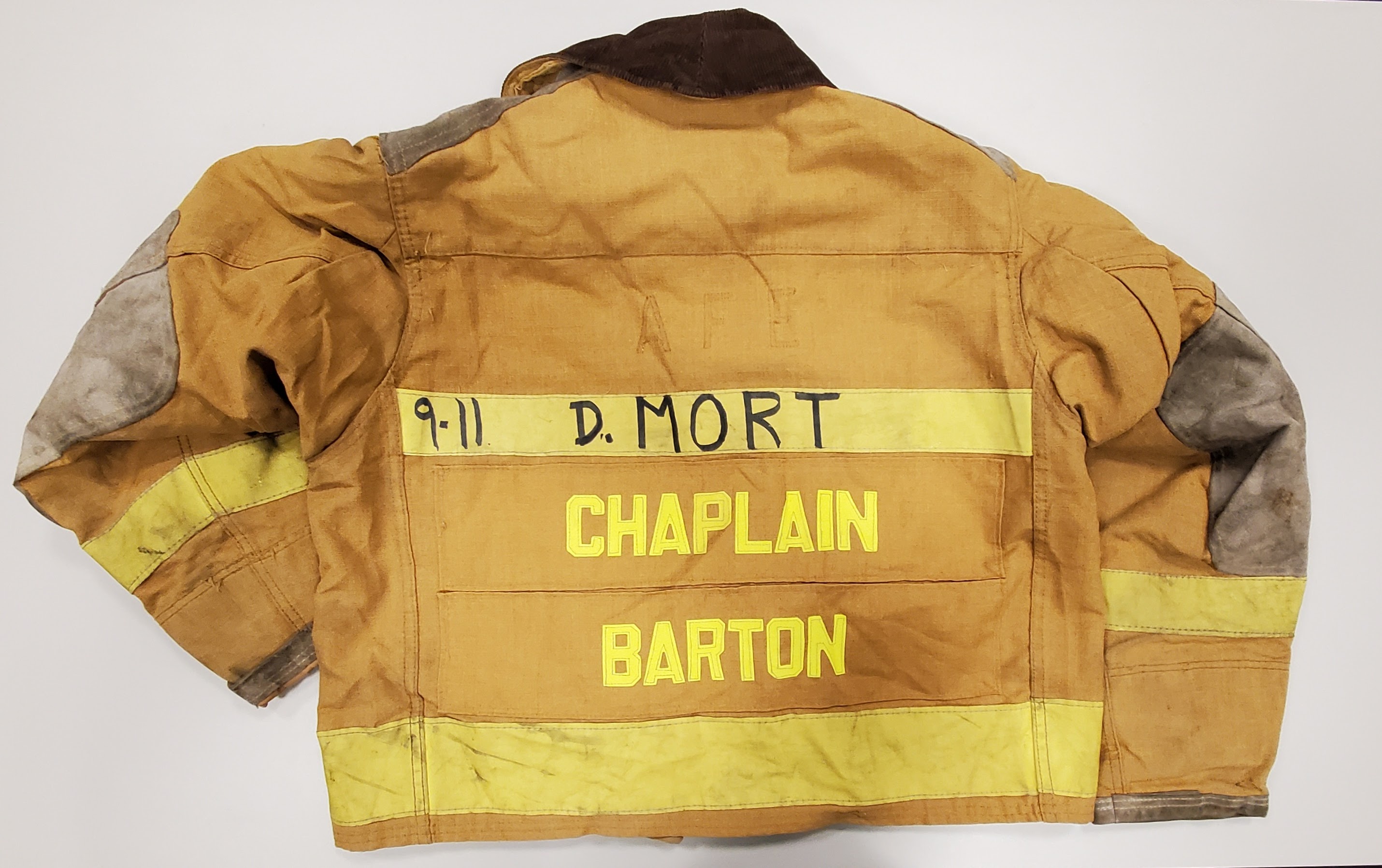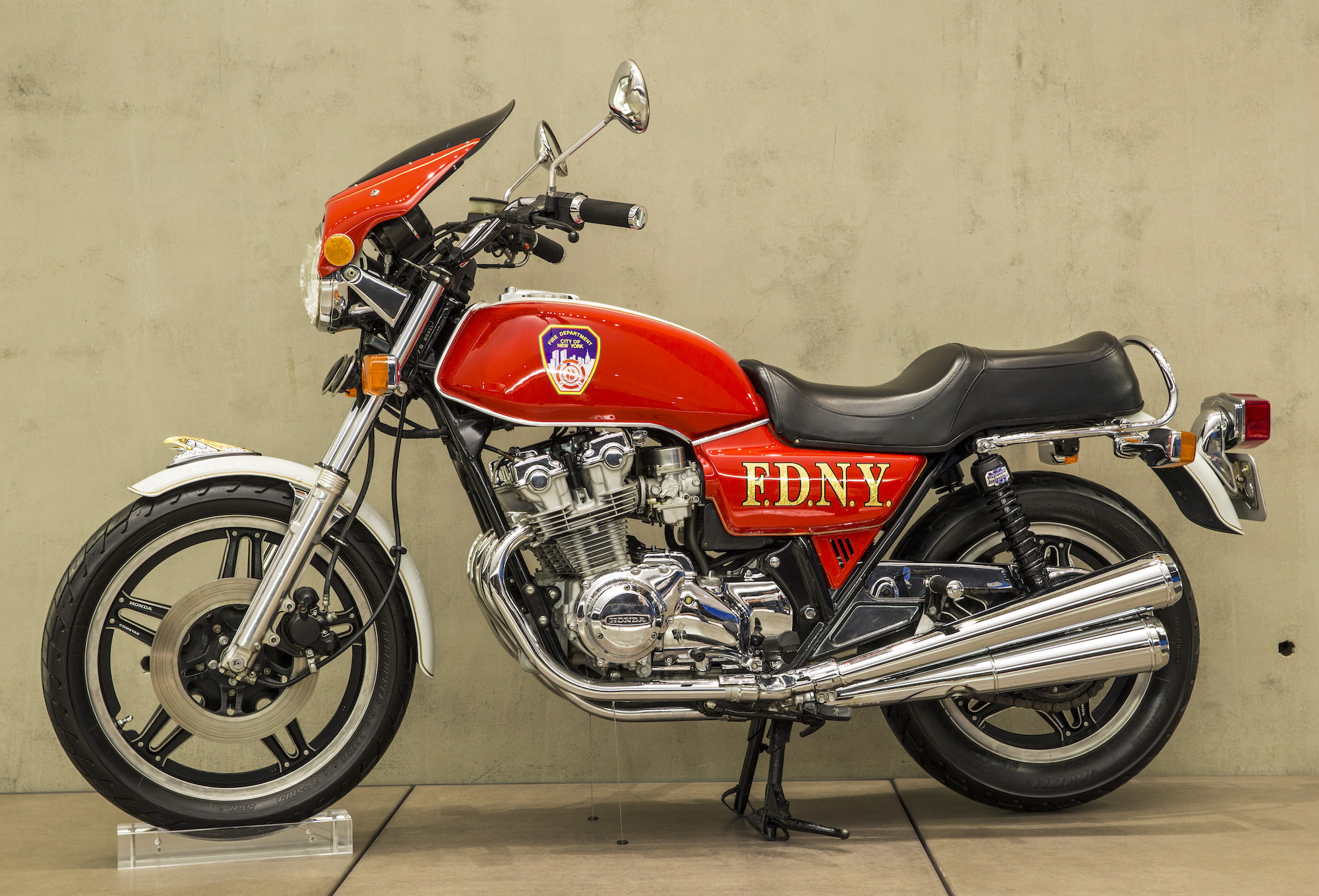Make a donation to the museum
Black History: Honoring the Vulcan Society and Its Ties to 9/11
Black History: Honoring the Vulcan Society and Its Ties to 9/11
- February 9, 2022

Courtesy Vulcan Society
The roots of 9/11 victim and survivor stories are buried deep, planted early that Tuesday morning in suburban kitchens, airport waiting areas, traffic jams, early trains, and fateful last-minute plan changes. But for the 12 black firefighters who lost their lives rushing toward danger to help others after the attacks, the story begins more than 120 years ago, across the East River.
Engine Company 6 was inducted into the Fire Department of the City of New York in 1898. When William A. Nicholson was assigned to its veterinary department in December of that year—to tend to the needs of its horses—he became the Department's first black member.
It would be another 16 years until a second black firefighter, John H. Woodson, joined the ranks. Unlike Nicholson, Woodson was assigned to perform regular firefighting duties at Ladder Company 106, also based in Brooklyn. Another five years after that, Woodson read about the impending appointment of a third black firefighter, Wesley Williams. Feeling a duty to share the realities of his experiences, Woodson wrote to Williams, warning him about the prejudice existing within the Department at the time.
Despite being the only candidate of 2,700 to achieve a perfect score on the entrance physical examination, and despite the glowing character references he received from prominent individuals including former President Theodore Roosevelt, Williams endured hostility and mistreatment by fellow firefighters. Nevertheless, Williams quickly made a name for himself as a courageous responder and was promoted to Captain in 1934 and then Battalion Chief in 1938.
By 1940 there were over 50 black firefighters within the Department, prompting the establishment of a unifying organization which they named the Vulcan Society. Since then, the Society has played an active role in advocating for black firefighters. Throughout the 1940s and 50s, considerable strides were made—the Society recruited more black men to join the Department (women would not join until 1980), strengthened ties to the community through efforts like the Fire Prevention Programs in Harlem, and formed relationships with the NYPD’s equivalent organization, the Guardians. The Vulcan Society also became a lifetime member of the NAACP. In 1966, Vulcan Society ex-President Robert O. Lowery was sworn in by Mayor John V. Lindsay as the 21st New York City Fire Commissioner, the first black Fire Commissioner to serve that post in a major U.S. city.
On 9/11, members of the Vulcan Society were among the FDNY who responded to Ground Zero to assist with rescue and recovery efforts. Twelve black firefighters made the ultimate sacrifice that day: Gerard Baptiste, Vernon Cherry, Tarel Coleman, Andre Fletcher, Keith Glascoe, Ronnie Henderson, William Henry, Karl Joseph, Keithroy Maynard, Vernon Richard, Shawn Powell, and Leon Smith Jr. This Black History Month and always, we remember the depths of their service, professionalism, and courage.
Sources:
Vulcan Society Inc.
Vulcan Society Wikipedia
By 9/11 Memorial Staff
Previous Post
Remembering Bill Barton: A Lifetime of Service

On Four Chaplains Day, we remember the bravery and unifying presence of Bill Barton, Disaster Chaplain at the Pentagon and Ground Zero, who illuminated the dark days after 9/11 with hope and strength.
Next Post
Black History: "The Dream Bike"

First responder Gerard Baptiste was killed on 9/11, but his memory lives on in the form of a very special motorcycle, restored by fellow Ladder 9/Engine 33 firefighter Michael Wernick.